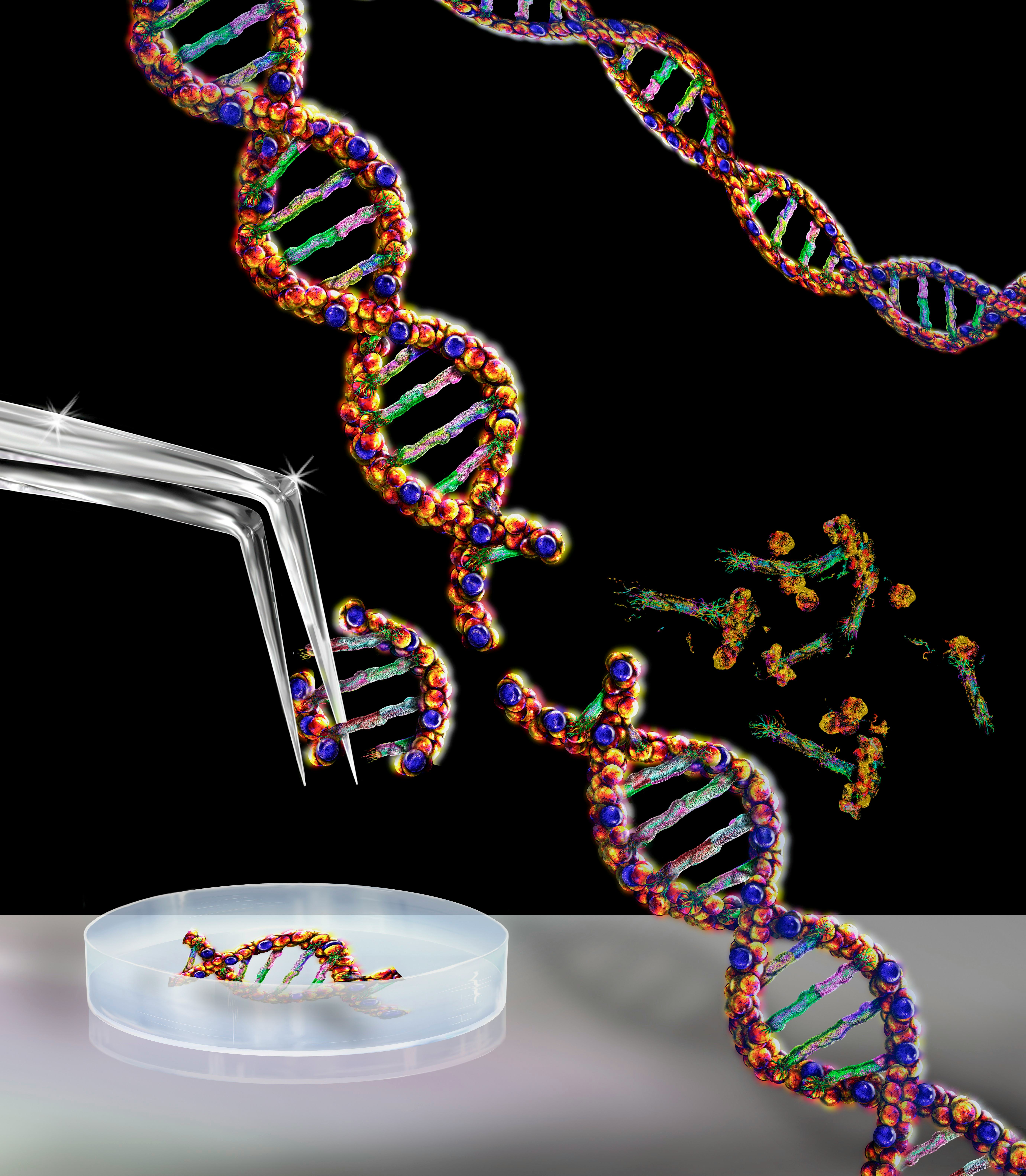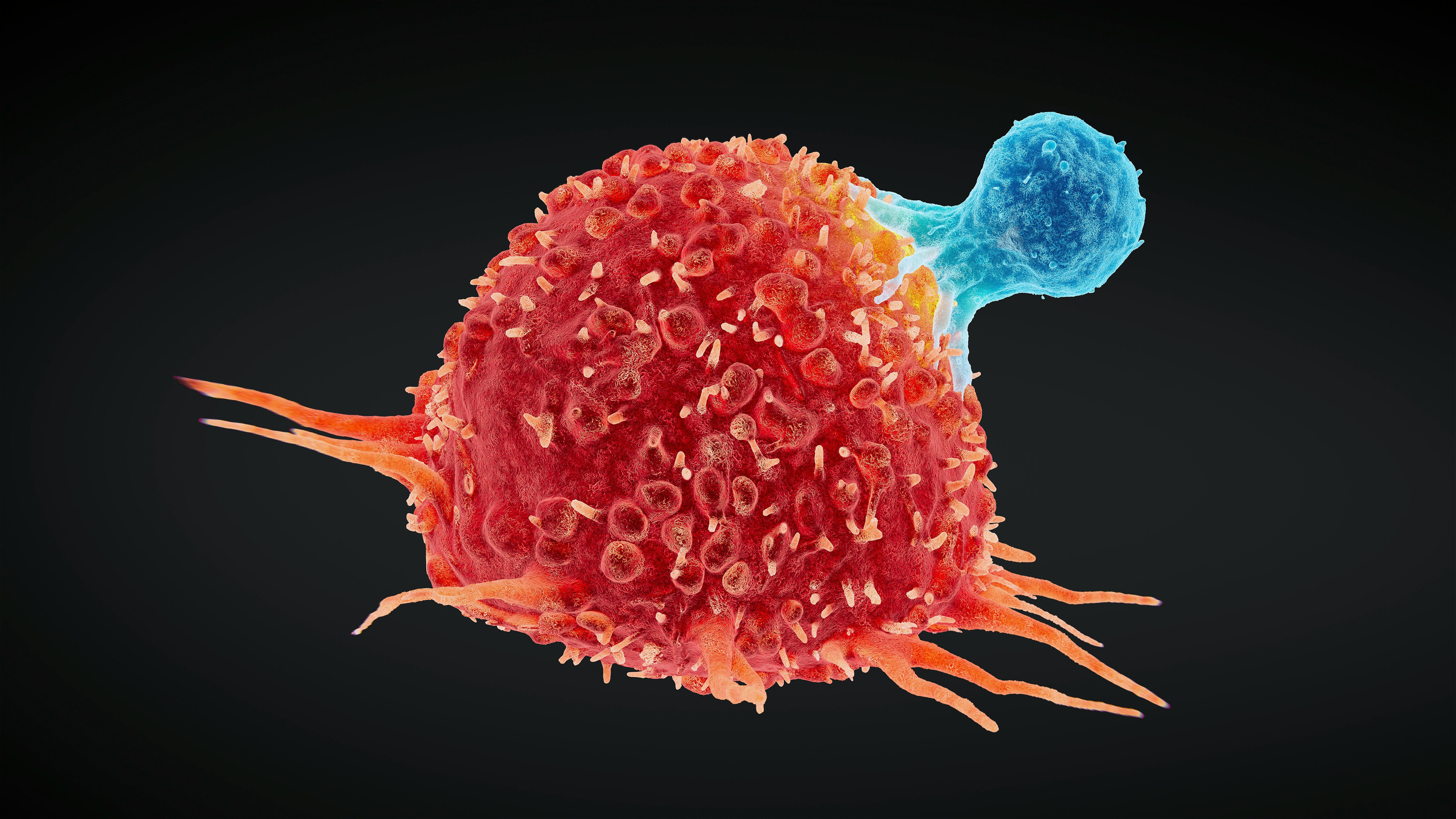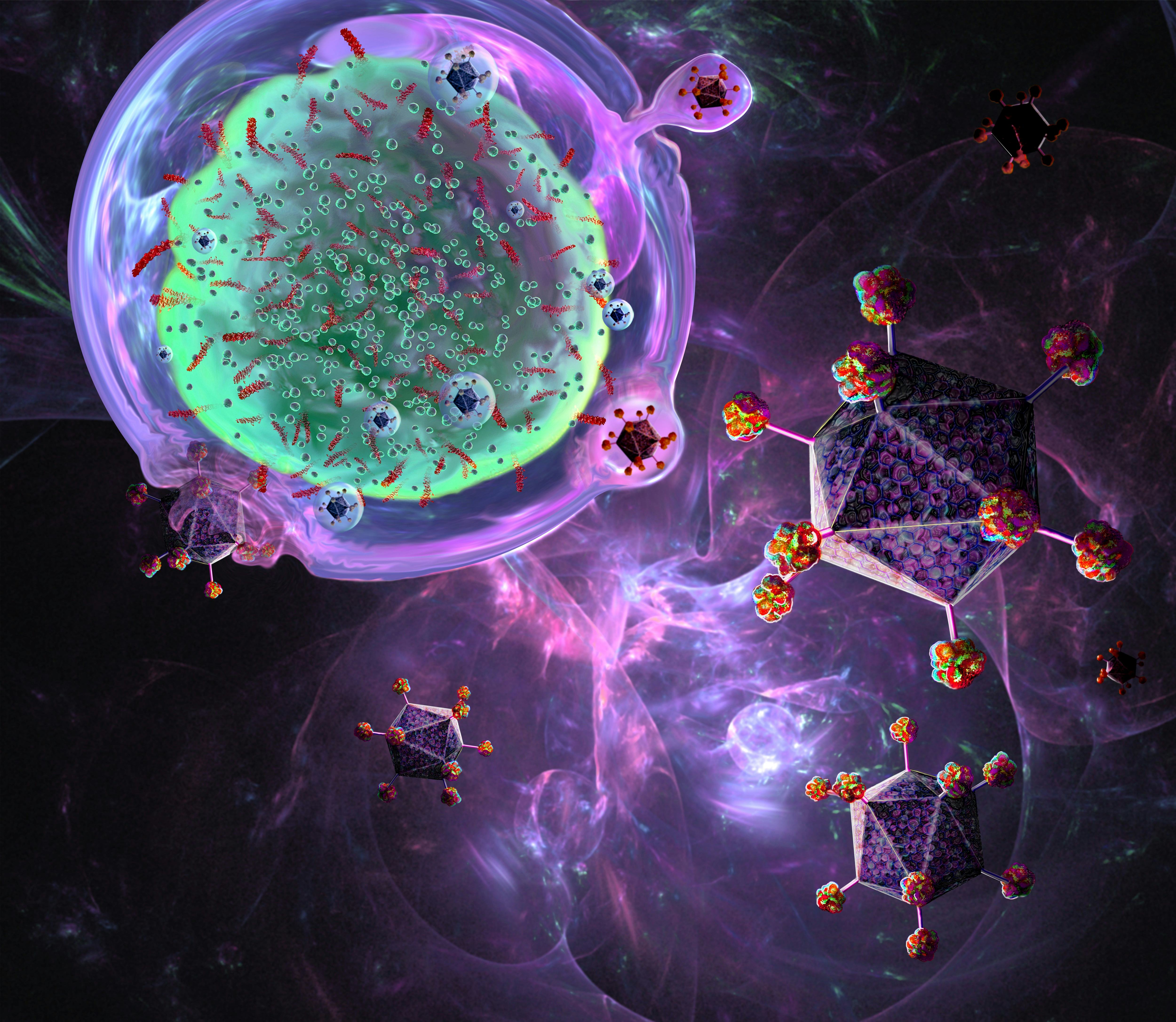
CRISPR, the powerful yet easy-to-use gene editing tool, has become a versatile technology that’s poised to revolutionize everything from agriculture to cancer treatment. Now, a new study out in Nature last week suggests we might be one step closer to using CRISPR to squash cancer cells for good.
CRISPR’s power lies in its ability to precisely snip out genes we don’t want and replace them with ones we do. In recent years, scientists have been harnessing this skill to tweak a component of our immune systems — known as T cells — to help them fight cancer more effectively. Back in 2019, researchers at the University of Pennsylvania showed that CRISPR-edited T cells were safe to use in humans.
Now, researchers at the San Franciso-based biotech company PACT Pharma and UCLA have found that not only are CRISPR-edited T cells safe but likely potent in annihilating cancer. The team published the results of a small-scale phase 1 clinical trial where 16 patients were infused with a custom blend of CRISPR-engineered T cells to spot cancer cells and destroy them.

The treatment wasn’t a show stopper — only five out of the 16 participants saw their tumors stabilize — but the study once again showed that using CRISPR-edited T cells is safe, as most participants had minimal and manageable side effects. The study offers hope that with future research, the era of personalized cancer treatments could be just around the corner.
“For [cancer] patients, this is an important proof of principle,” Katy Rezvani, a professor of stem cell transplantation and cellular therapy at MD Anderson Cancer Center who wasn’t involved in the study, tells Inverse. “In the next three to five years, we are going to see many more of these clinical trials being developed and for these trials to become safer and potentially much more clinically effective.”
Here’s the background — Cancer happens when the genes that make up our DNA mutate, causing them to grow out of control. Our immune system attempts to attack and destroy these cellular turncoats, but cancer cells are sneaky, and they mutate in ways that evade our immune detection. To help the immune system better fight these malignancies, scientists have developed various types of immunotherapies that help enable the immune system to do its job of finding and killing cancer cells.
The most promising, arguably, of all the immunotherapies has been T cell transfer therapy, where patients are infused with altered T cells (a key part of our immune systems) that have had their cancer-seeking, and fighting abilities boosted. One encouraging T cell transfer therapy that has emerged in recent years (and has clinicians and scientists excited) is chimeric antigen receptor (CAR) T cells. Considered a “living drug,” these cells are made by collecting a patient’s own T cells and genetically engineering them to recognize specific mutated proteins, or antigens, found on a cancer cell’s surface.

CAR T cells have worked really well in so-called liquid tumors — cancers of the blood and bone marrow — but they’ve had limited success with solid tumors like breast or lung cancers. Not only that, cancer cells tend to constantly mutate and spew a myriad of aberrant proteins, making it incredibly difficult to know what mutated proteins to go after.
This can complicate a CAR T cell’s clinical effectiveness, Susan Foy, director of translational research at PACT Pharma and lead author of the study, tells Inverse. “[CAR T cells] have been engineered to recognize one specific target, and you use that same [target] for every patient,” she says.
On top of that, making CAR T cells is a complicated, slow (it can take up to two years, which is often time people with cancer don’t have), and expensive process. This is because it’s incredibly hard to get those engineered receptors (CARs) into the T cell, so researchers use a virus that’s been deactivated (called a viral vector). Viruses, as anyone who's been infected with one knows, are incredibly skilled at entering cells.
But researchers have found that CRISPR can help solve two of those problems: It can help scientists more easily insert the special receptors into the cells without having to use a virus, and it can help T cells spot antigens — those mutated proteins on cancer cells — that are unique to an individual patient, making the treatment more personalized.
What they did — The researchers collected blood samples and tumor biopsies from 16 patients with solid tumors, including colon, breast, or lung cancer, and compared genes between tumor cells and healthy blood cells. For each patient, the researchers then used algorithms to predict which antigens would be most likely to appear. (Foy says identifying these unique cancer proteins took five months for each patient.)
They settled on three cancer-associated antigens for each patient. Then, they used CRISPR to genetically swap out the typical T cell receptors for ones that recognize those antigens.
After spending some time growing in the lab (and having the patients take a drug to lower their own non-engineered immune cells), these CRISPR-edited T cells were infused back, first at small doses of 400 million cells per person and then larger doses at four billion cells per person over the course of the clinical trial.
What they found — Most patients, 11 exactly, had a limited response to the treatment, which Foy says is likely due to the fact that their cancers were already pretty advanced (this clinical trial was their last ditch effort). However, for five of the 16, the CRISPR-edited T cells stopped the tumors in their tracks and prevented any further growth.
Two patients experienced side effects related to the treatment — one had cytokine release syndrome (where your immune system responds to an infection or immunotherapy more aggressively than it should), and the other had encephalitis or inflammation of the brain. Both cases resolved when the infusion was discontinued and with adequate treatment.
What’s next — While the results may not sound incredible, it’s a promising first start, says Foy and Rezvani.
“It’s important for people not to just look at the clinical results and say, ‘You know, these results were not that amazing,’” says Rezvani. “This is much more than that, this is the first step we can build on and we can make it better, faster, and much more effective.”
Currently, making these CRISPR-edited T cells is still a bit of a labor-intensive process, mostly because of the searching and sequencing involved in uncovering the specific antigens you’d want to target. But the actual manufacturing of the T cells only takes about 13 days, says Foy. In the future, that upfront discovery could be slimmed down if scientists created a library of all possible cancer-associated antigens.
“There really isn’t a catalog [because] most of these antigens or targets are unique to the patient,” says Foy. “So what we would do is aim to automate a lot of the screening process and improve the timeline for the manufacturer as well. With automation, you could scale [the process] to make it more feasible in a faster turnaround time.”
For now, the research remains ongoing, and PACT Pharma plans to expand its clinical trials to include a larger population of cancer patients.
“We’re going to try to do another trial next year,” says Foy. “Hopefully, we can continue to move therapies like this forward so we can treat more patients.







